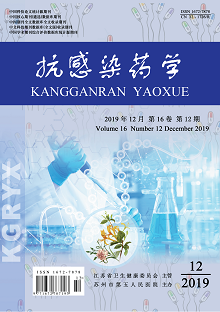ZHANG Xiu-mei, CHOU Xiao-hua, MA Cui
Objective: To explore the risk factors, distribution characteristics of pathogenic bacteria and drug resistance of stroke associated pneumonia (SAP) in patients with acute cerebral infarction, and to provide references for effective prevention and treatment of stroke associated pneumonia. Methods: Clinical data of 211 patients with acute cerebral infarction in the department of neurology of the hospital in 2018 were collected for retrospective analysis. Univariate and multivariate logistic regression analysis was used to analyze the risk factors, main pathogenic bacteria and drug resistance of apoplexy related pneumonia, combining with the treatment effect, and to analyze the rationality of the anti-infection treatment plan of patients. Results: Univariate and multivariate Logistic regression analysis was used, and the results showed a positive correlation between endotracheal intubation or ventilator use, hypoproteinemia, and nasal feeding as well as the occurrence of SAP (P<0.05). Among the 211 patients with acute cerebral infarction, 69 strains of pathogenic bacteria were found, mainly Gram-negative bacteria, and the main pathogenic bacteria were Acinetobacter baumannii (28.99%), Pseudomonas aeruginosa (15.94%), Staphylococcus aureus (14.49%) and Klebsiella pneumoniae (11.59%). Drug resistance of pathogenic bacteria was relatively serious. The initial anti-infection treatment for SAP patients was mainly combined with cefotaxime-sulbactam and moxifloxacin. Only 36 of the 105 patients with SAP were effective. Conclusion: The occurrence of SAP was associated with major risk factors for patients such as endotracheal intubation or ventilator use, hypoproteinemia, and nasal feeding. The main pathogenic bacteria were Acinetobacter baumannii, Pseudomonas aeruginosa, Klebsiella pneumoniae and Staphylococcus aureus. The multi-drug resistance of the pathogenic bacteria was relatively common, and the initial treatment scheme was more empirical, and the anti-infection treatment effect was not ideal.
